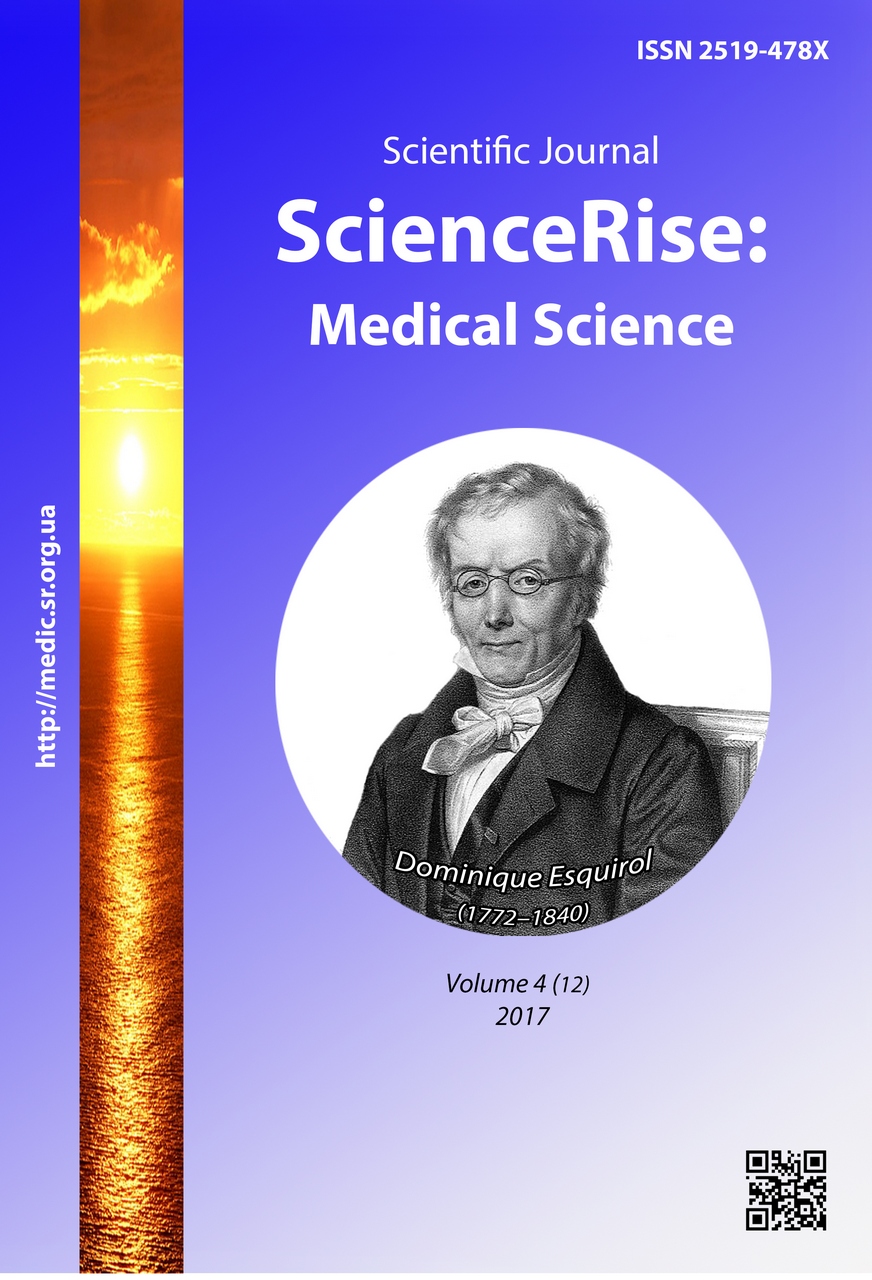Эффективность противогрибковой сублингвальной аллергенспецифической терапии у больных до 50 лет и старше с легкой и средней тяжести бронхиальной астмой
DOI:
https://doi.org/10.15587/2519-4798.2017.100270Ключові слова:
бронхиальная астма, пожилые больные, фунгальная аллергия, сублингвальная аллерген-специфическая иммунотерапияАнотація
Цель работы – изучение эффективности противогрибковой сублингвальной аллергенспецифической терапии (АСИТ) (с микст-аллергенами плесени бытовой) у больных легкой и средней тяжести бронхиальной астмой в зависимости от возраста (до 50 лет и старше). Результаты показали высокую эффективность АСИТ, что подтвердило улучшение показателей функции дыхания, уменьшение кожной чувствительности к фунгальным аллергенам, улучшение качества жизни независимо от возраста
Посилання
- Cardona, V., Guilarte, M., Luengo, O., Labrador-Horrillo, M., Sala-Cunill, A., Garriga, T. (2011). Allergic diseases in the elderly. Clinical and Translational Allergy, 1 (1), 11. doi: 10.1186/2045-7022-1-11
- Baptistella, E., Maniglia, S., Malucelli, D., Rispoli, D., Pruner de Silva, T., Becker, R. et. al. (2013). Allergen-Specific Immunotherapy in Patients 55 Years and Older: Results and Review of Literature. International Archives of Otorhinolaryngology, 17 (04), 375–379. doi: 10.1055/s-0033-1353138
- Al-Alawi, M., Hassan, T., Chotirmall, S. H. (2014). Advances in the Diagnosis and Management of Asthma in Older Adults. The American Journal of Medicine, 127 (5), 370–378. doi: 10.1016/j.amjmed.2013.12.013
- Battaglia, S., Benfante, A., Scichilone, N. (2015). Asthma in the older adult: presentation, considerations and clinical management. Expert Review of Clinical Immunology, 11 (12), 1297–1308. doi: 10.1586/1744666x.2015.1087850
- Todo Bom, A., Mota Pinto, A. (2009). Allergic respiratory diseases in the elderly. Respiratory Medicine, 103 (11), 1614–1622. doi: 10.1016/j.rmed.2009.06.003
- Milgrom, H., Huang, H. (2014). Allergic Disorders at a Venerable Age: A Mini-Review. Gerontology, 60 (2), 99–107. doi: 10.1159/000355307
- Ventura, M. T., Scichilone, N., Gelardi, M., Patella, V., Ridolo, E. (2015). Management of allergic disease in the elderly: key considerations, recommendations and emerging therapies. Expert Review of Clinical Immunology, 11 (11), 1219–1228. doi: 10.1586/1744666x.2015.1081564
- Asero, R. (2004). Efficacy of Injection Immunotherapy with Ragweed and Birch Pollen in Elderly Patients. International Archives of Allergy and Immunology, 135 (4), 332–335. doi: 10.1159/000082328
- Marogna, M., Bruno, M. E., Massolo, A., Falagiani, P. (2008). Sublingual immunotherapy for allergic respiratory disease in elderly patients: a retrospective study. Eur Ann Allergy Clin Immunol, 40 (1), 22–29.
- Bozek, A. (2016). Pharmacological Management of Allergic Rhinitis in the Elderly. Drugs & Aging, 34 (1), 21–28. doi: 10.1007/s40266-016-0425-7
- Simon-Nobbe, B., Denk, U., Poll, V., Rid, R., Breitenbach, M. (2007). The Spectrum of Fungal Allergy. International Archives of Allergy and Immunology, 145 (1), 58–86. doi: 10.1159/000107578
- Twaroch, T. E., Curin, M., Valenta, R., Swoboda, I. (2015). Mold Allergens in Respiratory Allergy: From Structure to Therapy. Allergy, Asthma & Immunology Research, 7 (3), 205. doi: 10.4168/aair.2015.7.3.205
- Knutsen, A. P., Bush, R. K., Demain, J. G., Denning, D. W., Dixit, A., Fairs, A. et. al. (2012). Fungi and allergic lower respiratory tract diseases. Journal of Allergy and Clinical Immunology, 129 (2), 280–291. doi: 10.1016/j.jaci.2011.12.970
- Denning, D. W., Pashley, C., Hartl, D., Wardlaw, A., Godet, C., Del Giacco, S. et. al. (2014). Fungal allergy in asthma–state of the art and research needs. Clinical and Translational Allergy, 4 (1), 14. doi: 10.1186/2045-7022-4-14
##submission.downloads##
Опубліковано
Як цитувати
Номер
Розділ
Ліцензія
Авторське право (c) 2017 Liudmyla Petrenko, Elena Rekalova

Ця робота ліцензується відповідно до Creative Commons Attribution 4.0 International License.
Наше видання використовує положення про авторські права Creative Commons CC BY для журналів відкритого доступу.
Автори, які публікуються у цьому журналі, погоджуються з наступними умовами:
1. Автори залишають за собою право на авторство своєї роботи та передають журналу право першої публікації цієї роботи на умовах ліцензії Creative Commons CC BY, котра дозволяє іншим особам вільно розповсюджувати опубліковану роботу з обов'язковим посиланням на авторів оригінальної роботи та першу публікацію роботи у цьому журналі.
2. Автори мають право укладати самостійні додаткові угоди щодо неексклюзивного розповсюдження роботи у тому вигляді, в якому вона була опублікована цим журналом (наприклад, розміщувати роботу в електронному сховищі установи або публікувати у складі монографії), за умови збереження посилання на першу публікацію роботи у цьому журналі.










